In a state full of national parks, Joshua Tree National Park is one of the more unique. Since its creation in 1994 the national park has attracted L.A.’s outdoor enthusiasts and curious adventurers to its lumpy desert terrain, a bizarre, Seussian landscape of rock outcroppings and desert flora. The park is comprised of two desert ecosystems, the Colorado and Mojave deserts, which make for contrasting hiking experiences.
The Mojave Desert
Encompassing the western portion of the park, the Mojave Desert is higher and cooler. Joshua Tree National Park gets its name from the Joshua tree that grows here, a pitchfork-like pine whose prongs point skyward like the trees found in a children’s story. Equally iconic within the park are the Mojave’s monzogranite outcroppings, also found on this side of the park. Thanks to these features, Joshua Tree’s most notable hiking destinations rest in the west.
- The Hidden Valley Nature Trail is an excellent introduction to the park’s terrain and biology, featuring some of the its more scenic boulder outcroppings and many of the park’s plant species.
- Skull Rock is one of Joshua Tree’s more recognizable rock formations at the end of a 1.7-mile loop.
- Ryan Mountain rises over 1,000 feet above its western Sonoran Desert surroundings, easily providing the best and most accessible 360-degree views of the 790,636-acre park.
- The ruins of the Wall Street Mill show off Joshua Tree’s mining history, contrasting the built and the desert environments. This and the Barker Dam Trail also provide access to the Wonderland of Rocks, whose rock features are as interesting to see as they are to climb.
- In addition to its boulders, Joshua Tree boasts a 30-foot natural arch at Arch Rock Nature Trail.
- The Lost Horse Mine Hike and Lost Horse Loop Trail to nearby Lost Horse Mountain will give hikers a full day’s excursion and challenging backcountry navigation.
- Ryan Ranch offers another glimpse at Joshua Tree’s human impact—this time, coated in gold dust. Hike there at dusk.
- Indian Cove is a short, family-friendly hike with interpretive signs that won’t eat up your whole day.
- The Barker Dam Hike is a 1.1-mile nature trail in the style of Hidden Valley and Skull Rock, but it includes a stop at the reservoir and dam built in 1900 by C.O. Barker. Keep an eye out for pictographs as well.
The Colorado Desert
East of the Hexie Mountains, the elevation drops below 3,000 feet, the Mojave Desert transitions into the Colorado Desert, and the pinyon pine and Joshua tree give way to a scrubland filled with yucca and Cholla cactus. Lower and drier, the sparse terrain of the Colorado Desert makes for otherworldly hiking—perhaps more of a personal journey than an outdoor, wilderness experience. Likewise, there are fewer trails on the eastern side of Joshua Tree National Park
- The Cottonwood Springs Nature Trail and Fortynine Palms Oasis both rest in a transition zone between the Mojave and Colorado deserts, so no Joshua Trees here—but the oases are certainly lesser visited, and they still feature oasis flora and fauna.
- Near the Cottonwood Visitor Center, Lost Palms Oasis hikes to the highest concentration of California fan palms, California’s only native palm species.
- Mastodon Peak is a short loop from Cottonwood Springs to a low summit with panoramic views of the surrounding Colorado Desert.


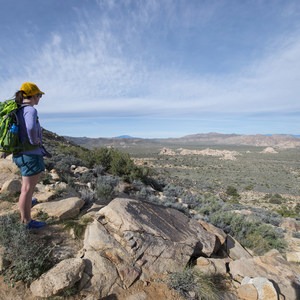
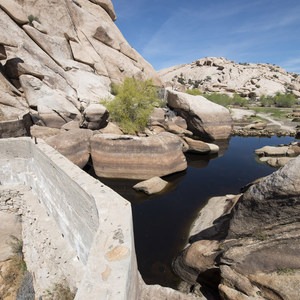
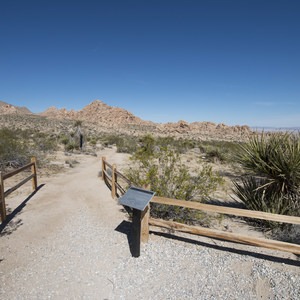
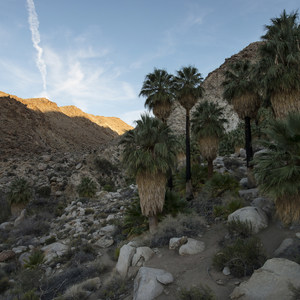
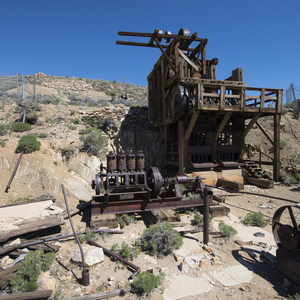
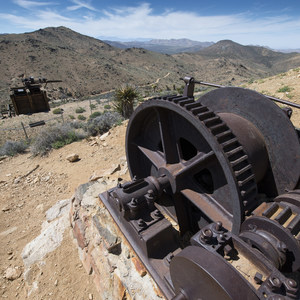
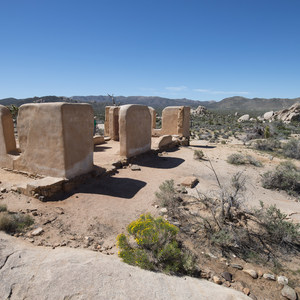
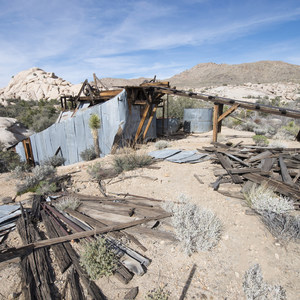



Comments
Sign In and share them.